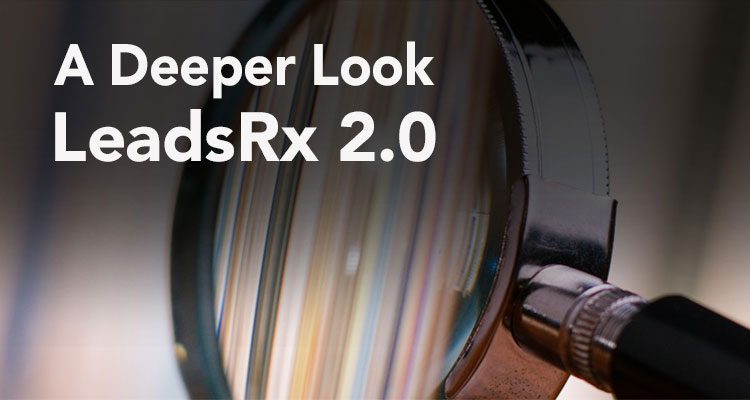The group here at LeadsRx is proud to announce some great news today! We’ve been working very hard to bring marketing attribution to marketers with all size budgets and we’re on our way. Typically, attribution was focused on high end enterprises with costs that SMB and Mid-Market companies just couldn’t afford. LeadRX is changing that as we’re now working with over 5000 accounts that range from new startups with minimal traffic to billion dollar global companies.
Attribution has been a hot topic for the past few years and is still in its infancy compared to other marketing techniques and ways to analyze conversion data. What was once a complicated and consulting-heavy industry is now making a shift to a SaaS model, and that’s where LeadsRx is making its mark.
Some key announcements and enhancements are listed below.
Free Ad Grader tool
We have launched a free tool that uses our universal tracking pixel and machine learning to grade the performance of advertising campaigns giving marketers quick insights into which programs to optimize and which may be wasted ad spend. The new Ad-Grader tool is available to all marketers as a way to use attribution to get quick insights about ad performance. Once the LeadsRx universal conversion tracking pixel has been installed, the LeadsRx product begins automatically finding existing advertising campaigns in real-time. The system then uses machine learning techniques to provide useful insights into which ads are doing well and which are candidates for improvement. More than 5,000 accounts now have the LeadsRx pixel installed and can access Ad-Grader reports free of charge. The diversity and volume of data will allow LeadsRx to produce important insights into advertising spend across a variety of industries.
Universal Tracking Pixel
Historically, marketers commonly installed technology provided by various ad vendors called “conversion tracking pixels” (or “marketing tags”) to determine which advertisements resulted in customer acquisition events. Because different pixels from different vendors do not communicate with one another, and not all vendors provide pixels, marketers had to download data into spreadsheets and take days to understand results. As a result, marketers had an incomplete and outdated picture of ad performance resulting in arbitrary placements and wasted ad spend. With the release of LeadsRx, marketers now have a single, universal pixel that works across all ad vendors and all marketing channels to provide un-biased analysis of ad performance in real-time
The complete list of features in the 2.0 release of LeadsRx includes the following:
Universal conversion tracking pixel
A single tracking pixel (also called a “marketing tag”) can be installed on websites to track all advertising sources across all channels. Conversions, such as form submits and in-bound phone calls, are also monitored by the same tracking technology.
Free Ad-Grader tool
The LeadsRx Ad-Grader tool uses marketing attribution technology to help marketers know which advertising efforts are working well and which to cut. Existing advertisements are automatically found, delivering attribution results sooner so that marketers can make more timely decisions.
Algorithmic attribution
LeadsRx uses machine learning to evaluate historical patterns of successful and non-successful conversion paths and delivers attribution weighting based on findings. Each company using LeadsRx gets attribution modeling unique to their customer journeys and channels.
Real-time attribution modeling
Attribution modeling is performed in real-time can be changed dynamically. Models include first touch, last touch, linear multi-touch, weighted multi-touch, algorithmic multi-touch. Three additional models are available and are unique to LeadsRx: CloserTouch™, AnyTouch™, and Fuzzy Attribution™.
Radio and television attribution
Predictive modeling and lift analysis lets LeadsRx include broadcast advertising in attribution models just like digital experiences. Retroactive attribution lets air time of commercials be provided after they occur.
Integration with Google AdWords and Facebook
Cost data from AdWords and Facebook is automatically retrieved by LeadsRx so that marketers can review a complete Return on Ad Spend (ROAS) analysis.
Integration with CallSource
In-bound telephone calls using forwarding numbers from CallSource can now be included as customer acquisition conversions. Marketers can measure the impact of advertising on this important conversion point.
Weekly attribution digest
LeadsRx includes a back-end “brain” that reviews marketing efforts and then produces a weekly digest of findings. This saves marketers time having to analyze detailed reports themselves.
Thank you to all our clients, partners and friends for the great support and feedback to help shape a product that can be used across all industries and budgets.

